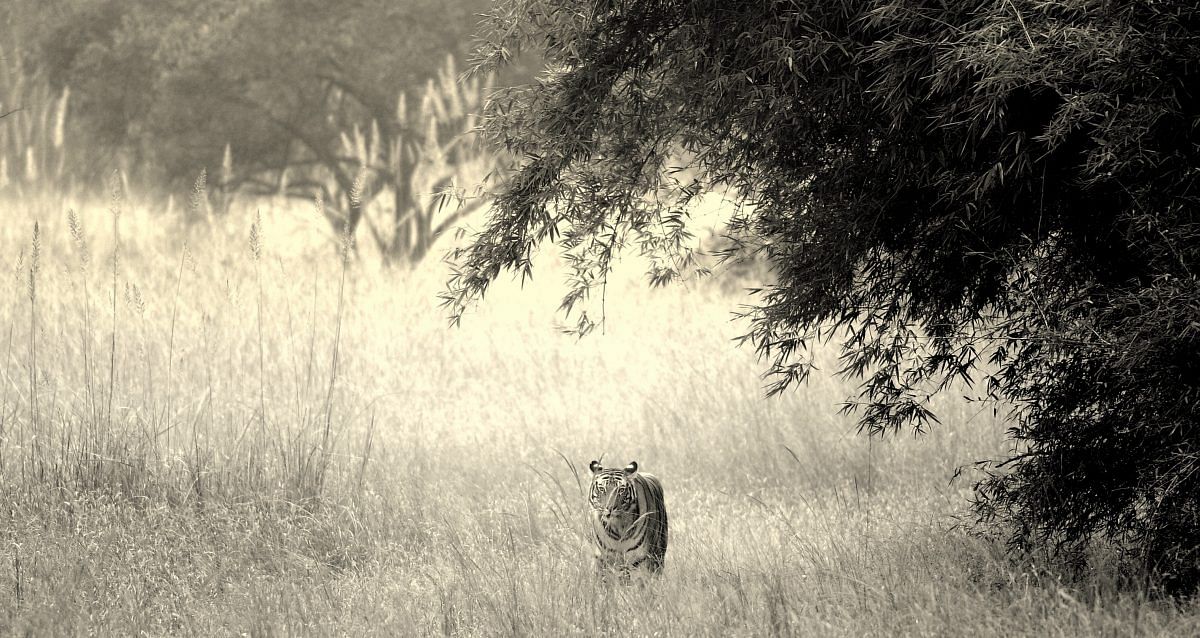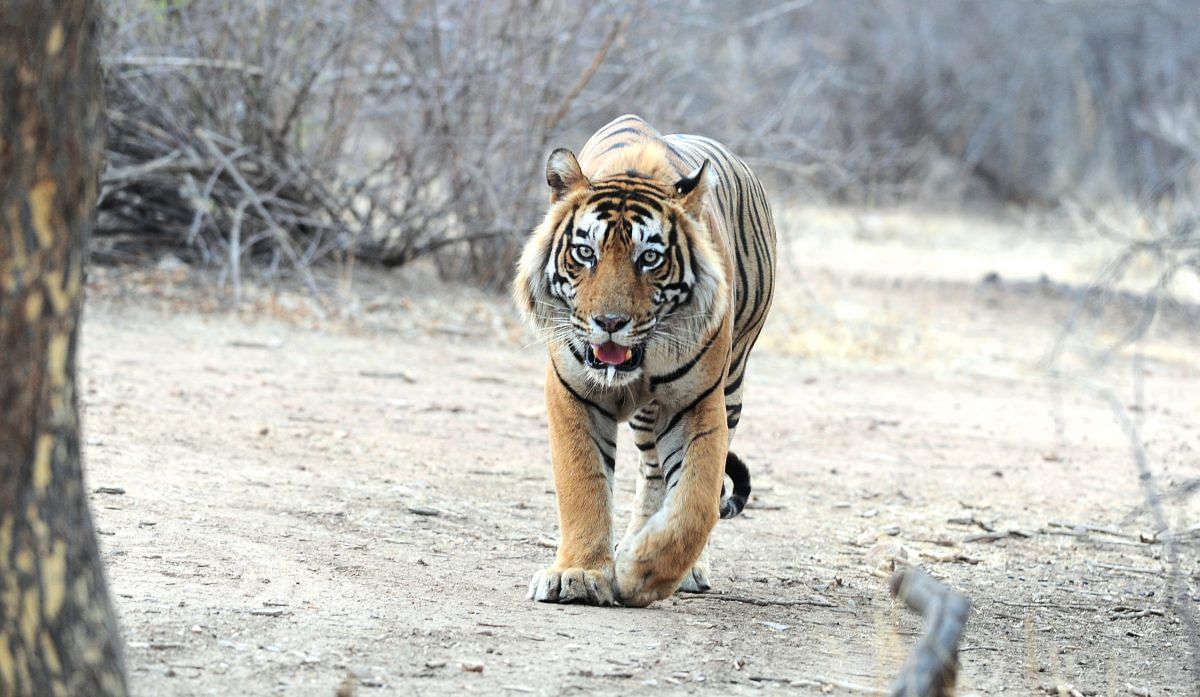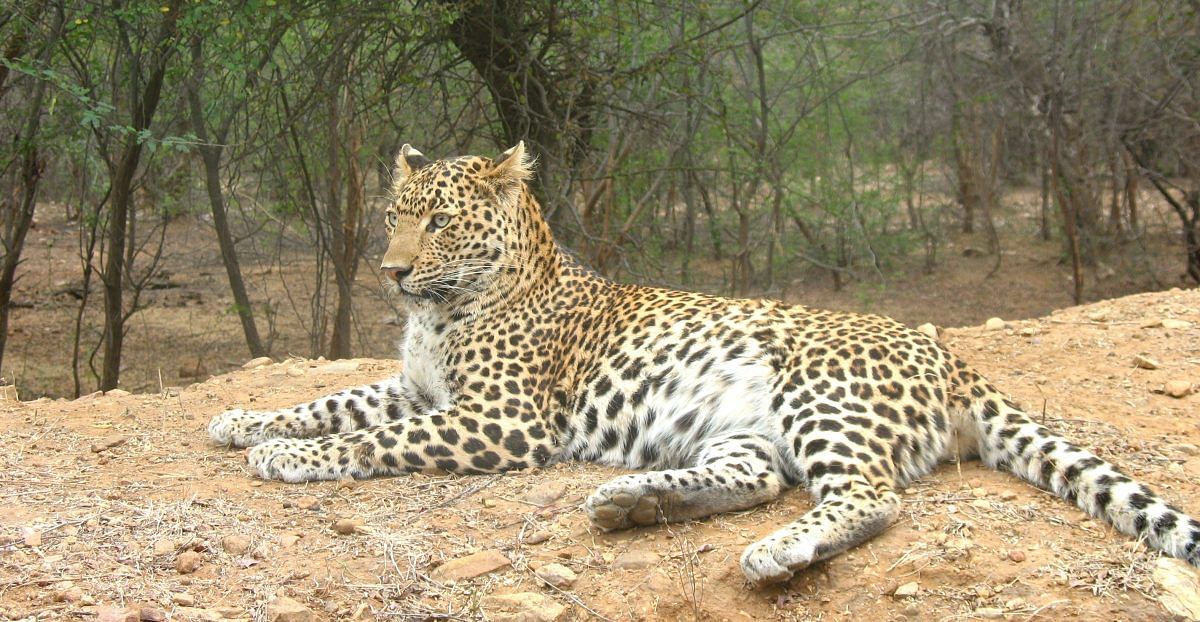It’s an attack that has been going on for decades now, both in fact and fiction. The mob of 40-plus villagers who recently bludgeoned a tigress to death at the boundary of Pilibhit Tiger Reserve in Uttar Pradesh, and even made a video of the act, should not be gloating with satisfaction. Hollywood and the Indian film industry stole a march over them long ago.
The non-stop assault on the tigers, such as the one by the Pilibhit mob, continues even as we observe 29 July as the Global Tiger Day to focus on their plight and uncertain future.
Kipling’s curse, Bollywood’s worse
For too long now, the tiger in India has been running scared because of an unusual curse. The curse that Rudyard Kipling placed on him over a century ago, and one which still works to his great disadvantage. Tied to the hyped-up, skewed and totally incorrect image, which stands only a few notches below that of Sherlock Holmes’ arch enemy, Professor Moriarty, the tiger has become the preferred punching bag of film-makers.
Never in his wildest dreams did Shere Khan think he would arrive at such crazy crossroads in life. But this is what happens when you mix fiction with facts. The cocktail begins to stink.

From Amitabh Bachchan to Walt Disney, and several other luminaries in between, every one of them has taken extreme pleasure in putting the tiger on the mat. Remember Khoon Pasina (1977) and Mr. Natwarlal (1979)? In both these films, the directors did what in real life would be unthinkable. They pitted Big B against (trained) tiger, to add extra shine to the actor’s already larger-than-life persona, and made him come out of the battles totally unscathed.
Also read: Indian forests don’t have space for more tigers. What will the tiger lobby do now?
To put things in perspective, yanking off a hand-pump from the ground will be a child’s play compared to a successful hand-to-paw fight with a tiger in real world. Sunny Deol, though, may not agree to this.
Disney’s villainous role
Let’s turn the clock back by a few decades, to 1967. This was the year of The Jungle Book, the animated feature film by Disney Studios based on Kipling’s book of the same title. A huge international hit, ably aided by such timeless musical numbers as ‘Bare Necessities’, ‘That’s what Friends are For’, and ‘Colonel Hathi’s March’, the film was also Walt Disney’s swan song as a producer and he put all his creative juices to work in the project. Cornered by the feral kid Mowgli and the entire jungle folk, Shere Khan the tiger emerged here as the biggest villain of the day, black as moonless night and with not a single redeeming feature.
Years passed, but the image remains intact. The 2016 live-action production of The Jungle Book by Walt Disney Pictures once again brought forth the evil Shere Khan, this time in a more sinister, 3-D avatar. Mindlessly, film-makers all over the world keep on marching to the tune set by Rudyard Kipling — while being totally deaf to the groundswell of public support, which the tiger has gathered in the past 50 years. What could be more ironic than this: A year before Disney’s second version of The Jungle Book hit the cinema screens, petitions were filed in both the Supreme Court of India and the Rajasthan High Court to secure pardon for ‘Ustad’, the hugely popular tiger of Ranthambore.

Never in the recent memory had India seen such massive outpouring of love and goodwill for an individual tiger. Even though it was established beyond doubt that Ustad had killed four people, thousands gathered in his support. There were nationwide protests against the forest department’s decision to shift him to Udaipur zoo.
Now, the dose of reality, which was completely missing in Rudyard Kipling’s hypnotic but misleading work. Allied with Mowgli is Bagheera the black panther who, along with Baloo the bear, teaches the human kid the laws of the jungle. Nothing could be farther from truth in the India of then and now. Bagheera is obviously modelled on the Indian leopard, the same wily leopard that, in reality, has been the most prolific killer of humans – especially of children and women – in dozens of places all over the country, from the hills of Uttarakhand to the tea-estates in Assam and beyond.
Also read: Killing Avni: Trigger-happy solution or failure of India’s tiger conservation policy?
Corbett comes to rescue
And what about the much-maligned tiger?
It took someone like Jim Corbett to set the record straight. It’s a pity he came upon the scene later, several decades later in fact, but with equally gripping and factually authentic books of his adventures in India’s wilderness. Even 75 years after its first publication, Corbett’s classic work, Man-Eaters of Kumaon, remains in print.
Correctly calling the tiger ‘a large-hearted gentleman,’ Corbett writes in the book, “Tigers, except when wounded or when man-eaters, are on the whole very good-tempered.” He then makes his most famous, an almost prophetic, statement: “Tiger is a large-hearted gentleman with boundless courage and that when he is exterminated – as exterminated he will be unless public opinion rallies to his support – India will be the poorer, having lost the finest of her fauna.”
Though India’s first – and arguably the finest – tiger reserve is named after him, Jim Corbett’s toughest and most nerve-raking hunt concerned a man-eating leopard, and not a tiger. It took him several months to dispatch that one accurate bullet after the killer, at times almost becoming prey to the spotted terror. And what a hunt it turned out to be! Such was the intensity of the chase, which took place in the treacherous 500 square miles of the man-eater’s area of operation in the Garhwal Himalayas, that he wrote an entire book, The Man-Eating Leopard of Rudraprayag, on it.
Also read: Jim Corbett — the man known for being both a hunter and champion of tigers
Leopards take over
The notorious Rudraprayag leopard was accounted for in May 1926. One would assume the passage of time has brought peace in the region, both to the people and the leopards.
Unfortunately, this is not the case. A few years ago, while filming a wildlife documentary in the Paudi region of the hill state, I interviewed then Chief Wildlife Warden of Uttarakhand, Srikant Chandola, and he made this astounding comment: “In the hills of Uttarakhand, the leopard still remains the biggest killer of humans. These incidents regularly happen in the far-flung villages, often miles away from the state highways, and therefore escape the scrutiny of national and state media. The tiger, on the other hand, is much more peaceful. We face no problem with him.”

The facts have proved Chandola right. The last man-eating tiger in Uttarakhand was shot dead eight years ago, in January 2011. But to be fair to the condemned big cat, all the human kills took place in or around Sunderkhal village, the problematic and unauthorised village situated right on the wildlife corridor joining Corbett Tiger Reserve with the Ramnagar forest division. For the past three decades, the forest department of the state has been making efforts to relocate Sunderkhal, but in vain. With several hundred houses making up the village, it’s a huge vote-bank for the politicians.
And the tiger doesn’t have a vote.
Incidentally, the lynching of the tigress in Pilibhit is not a stray incident. Earlier this month, a tigress and her two sub-adult cubs were poisoned to death outside the boundary of Maharashtra’s Tadoba Tiger Reserve. The two places are 1,200 kilometres apart, but should that really matter? It’s a new-age India where the reel life and the real life have joined forces against this magnificent big cat.
The author is a senior journalist and film-maker who writes on environment and wildlife. Views are personal.







It’s a beautiful depiction of facts about the overall conditions of the grand animal The Tiger. I am from eastern Assam, bellow the foothills Mizoram and between the thick lush tropical green forests of Meghalaya, Assam and Mizoram.
I have seen during my childhood very thick, lush green dense forests just as little as less than three kilometers from my native village home of village Lantugram, Dhalai Bazaar. The forest was called Tengti Pahar. A dense thickly wooded forests with very big and tall trees.
As someone entered into the forest walked towards West, he will only pass on miles of forest ranges full of various kinds of animals including the great majestic forest dwellers the tigers.
They never used to be found near the village forest range rather they dwelt in the deep dense forest behind the first range that passes through one side of the village from North to South leading to the more thick and densely forest of the present day Mizoram, the hill is called the Lusai Pahar(Pahad).
In 2003,I had been to my village after a very long time, I was astonished to see the spoiling of the gigantic grand forest into some collections of Tillas without any tree and barely any herbs shrubs. The forest has been brought to it’s knees by the government as well as the intruders of the forest range.
Well projected facts and kudos to the author Mr. Ajay Suri… Indeed, it is high time that our society and the entire nation put a stop to this craze of usurping the forest lands and the skirting areas in the name of development.
Let the government pump in more funds to the forest departments and ensure that this money is wisely used in the cause of these majestic striped and also spotted feline beauties besides the elephants and numerous other flora and fauna…